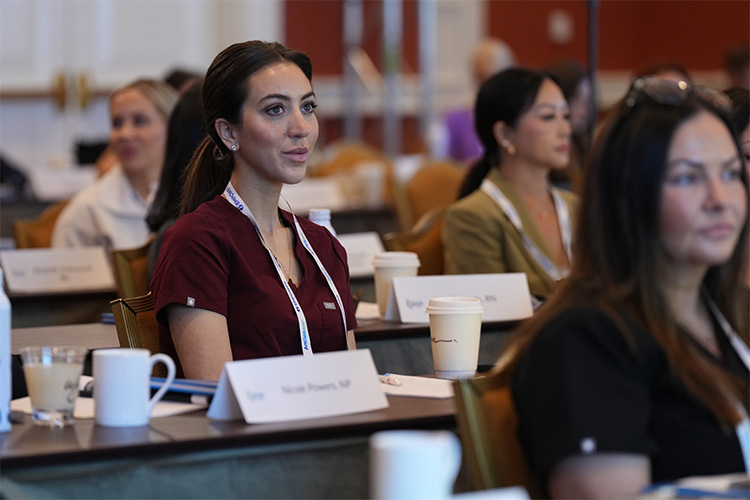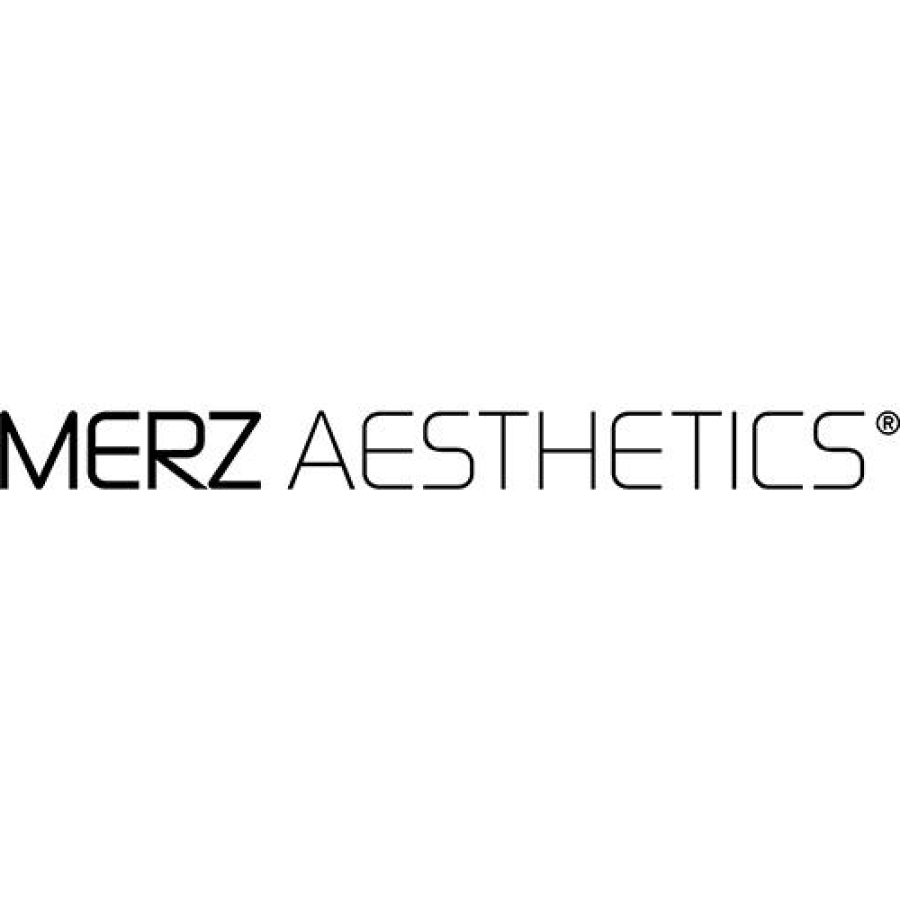
Clinical
Radiofrequency and Non-RF Microneedling Safety: What Patients Should Know
With Molly Muecke, RN, MSN, NP-CMicroneedling is a popular aesthetic treatment offered in 79% of med spas (2024 Medical Spa ...
Posted By Madilyn Moeller, Tuesday, May 20, 2025

By Madilyn Moeller, Marketing Content Coordinator
“It’s an investment in yourself and in your learning and in your future, and for your practice that’s the best thing you could do. When you bring those pearls back to your office, they’ll see the difference.” Simi Jacob, RN, Blades Wellness & Aesthetics, about the AIA Advanced Cadaver Course
Medical spa professionals constantly promote the value of continuing to attend aesthetic conferences and clinical trainings. What kinds of training do they attend at different experience levels, how much training do they go to, and what do they hope to gain from continued training? Read on to hear directly from aesthetic injectors and alumni of the Academy for Injection Anatomy (AIA) Advanced Cadaver Course.
AIA alumni are coming together at the birthplace of AIA for an exclusive reunion and refresher course. Featuring live injections performed by Dr. Chris Surek with simultaneous ultrasound from Dr. Steven Weiner, this course bring a more intense, deeper dive into the anatomy you learned with an optional lab day to reinforce safe aesthetic practices and technique. Stay tuned for updates on this incredible event!
Foundational training helps new injectors identify knowledge gaps and build a strong base for safe, effective practice.
For beginner injectors and those transitioning into medical aesthetics, start with learning the fundamentals. Virtual Foundations gives every person who comes through the course the opportunity to learn what they know and don’t know by learning foundations of practice, of injection techniques. The very basics of neuromodulator science, the very basics of rheology and filler, a tour of basic technique so you can become a better injector and have a platform to build your practice.
For health care professionals looking to break into medical aesthetics, comprehensive training builds confidence, anatomical understanding, and patient safety awareness.
“I started asking around, what would be some good courses to take to expand my knowledge and this is the course that everyone recommended. My experience so far has been absolutely wonderful. The teachers are amazing the people who are taking the course, they’re amazing. I’ve gotten so much information from them and it’s way more information than I ever thought I could possibly get. Being confident in injecting, knowing the anatomy, knowing my planes, I want to be confident and careful with my patients and therefore the way to do that is to know the anatomy. I think everybody who participates in any sort of aesthetic medicine needs to take this course.” Dr. Kristina Ericsson, MD, Obgyn, Ericcson Aesthetics
Advanced training bridges the gap between theoretical knowledge and real-world application, allowing injectors to visualize their patients' underlying facial structures.
“The biggest takeaway that I’ve seen so far is how to actually apply the anatomy that we’re learning into our everyday life with injections. We learn a lot of anatomy in books throughout our careers but this has been a really good experience into translating the books into real life. If you said you were considering coming to this course, the answer is yes. Just do it. It’s time to sign up and learn more.” Laura Jane Brougher, RN, Gig Harbor Aesthetics
“I think the anatomy to me has been amazing. We look at books and we read about things, but just being able to hear Dr. Surek really talk about it and break it down along with the other staff members, it made things really easy. I would say come. I would say my biggest regret would be not coming two year ago when I was initially looking at it. I would say pack your bags, come as quick as you can.” Brooke Tincher Cox, APRN, FNP-C, O’Daniel Plastic Surgery Studio
“My experience since I’ve gotten here has been absolutely phenomenal. The reason why I attended this class specifically was because I wanted to work hands-on with the cadaver. I know that I inject faces all the time but I’ve never actually opened up a face and looked at the different layers of the face. Day two has been absolutely fascinating. Since the moment I walked into that room and I looked at the cadaver, I realized this is something that every new injector needs. Moving forward, I do not believe that any injectors should be practicing on a live patient until they actually are able to dissect a face and look at the anatomy. Knowing where the veins and the arteries are [is] crucial for every injector. It’s been awesome.” Stephanie Porter, ANP-C, Tenth Avenue Aesthetics
Even seasoned professionals benefit from revisiting anatomy to refine their technique and ensure patient safety.
“I have been an injector for 18 years, I wanted to learn more about the anatomy. Dr Surek jokes that it’s like being on Ms. Frizzle’s school bus going through all the anatomy and understanding all the structures, and it’s incredibly helpful to stay safe with your patient. Because I think whether if you’re a new injector or an experienced injector, everyone can benefit from this. Dr. Surek and Dr Weiner are both so excited about the anatomy and they just love to show it to you so it’s a fun class. It’s the class that you really if you are an injector you definitely want to come to. It’s been great, I’ve loved it. I almost want to kind of come back again.” Khyati Kapur, PA-C, KBK Aesthetics
Injector-specific courses go beyond general anatomy to focus on the nuances that matter most in aesthetic practice.
“I decided to sign up for the injection anatomy course with Dr. Surek because I feel that it is exclusively the only course that is really designed specifically for the injector. It’s not just anatomy, it’s anatomy specific to injections.” Kimmi Ragone, BSN, RN, CPSN, Bucky Plastic Surgery
Even seasoned professionals with decades of experience find new value in these specialized trainings. The detailed exploration of ligaments, muscles, and facial planes helps injectors refine their techniques and deepen their anatomical understanding.
“I’m a nurse practitioner specializing in dermatology. I’ve been injecting now for about 20 years. What I’ve learned new in this course that I didn’t know was really the intricate aspects of facial anatomy—discussing the thoroughness of ligaments, muscles—to help me relate to the anatomy of the face.” Johanna Fangmeyer, CRNP, Hagerstown Dermatology and Skin Care
Hands-on cadaver work offers an irreplaceable perspective on facial structures, reinforcing the importance of anatomical precision.
“I love cross-sectional dissection because it allows us to see everything as it interplays with itself. Where the ligaments, the vessels, the fat compartments and all the potential targets and danger zones the injector can encounter.” Dr. Christopher C. Surek, DO, FACS, Surek Plastic Surgery, in an episode of Medical Spa Insider
Tactile learning through dissection and ultrasound deepens understanding and enhances procedural confidence.
“You know, I think it’s one thing that we learn things on paper and we can be taught where anatomical structures are, where our vessels are and we learn things in this really two-dimensional view. But when you’re able to see it and feel it and dissect it and really understand where they are located, it gives a whole different appreciation and it just cements what you thought maybe you knew but now you really know it and you really understand it. The thought of utilizing ultrasound in this area, I mean I’ve used ultrasound and critical care in different fields but to now even think about putting it on the face so we can recognize these areas, it’s awesome. I mean I will take away so many pearls from this course.” Jennifer Fleming, APRN, JLF Aesthetics
Training translates into practical improvements that can be immediately applied to patient care.
“This training has really given me a greater sense of confidence with being able to assess one’s facial anatomy, doing patient facial assessments, knowing what my safety zones are where I am safely able to inject versus not. I would highly, highly recommend this course to anyone. You’re going to gain something beneficial out of it that you’ll be able to go back to your practice and implement. Christina Matheus, DNP, APRN, NP-C, Cunningham Clinic
Collaborative learning environments foster professional connections and provide a support system for complex cases.
“That’s why it’s so important to go to a course like Academy for Injection Anatomy to learn from the very best in the industry but learn among some of the best in the industry as well. Because the networking component to this is also very, very important to making good connections and having people that you can reach out to when something does come up that is interesting, that is a safety-oriented problem that you can then go to your pool of people and ask them about it and get some differing opinions on how to manage it.” Kimmi Ragone BSN, RN, CPSN, Bucky Plastic Surgery
Understanding anatomy at a deeper level leads to safer, more effective injection techniques.
“I found out about this course through several colleagues who highly recommended it and then through my research I found that this is one of the most reputable conferences to attend. So the staff has been amazing, the instructors just are so resourceful and so helpful and really help take what we learn and help us understand it in a practical day-to-day setting. For me patient safety is so important and I think it’s really valuable to understand the anatomy. I learn a safer approach and technique when it comes to tear trough injections. This injection course just really took what I have know and learn and has taken it to the next level.” Shannon Synoracki, MHS, PA-C, Prejuvenation Aesthetics
Continued education is essential in a constantly evolving field, ensuring injectors stay current and competent.
"One of my deciding factors about coming to this course is ongoing learning and continuing education. I feel that it is extremely important for injectors to pursue educational opportunities that are directly correlated to what we do as a craft each day, because the techniques and the technology is ever changing and we have to stay on top of that. So I think that as you get to be more experienced in the injectable field you quickly come to learn that as you’ve learned all of the pearls and pitfalls of injecting that you still have so much more to learn." Kimmi Ragone BSN, RN, CPSN, Bucky Plastic Surgery
Related Tags
Medical spa news, blogs and updates sent directly to your inbox.

Clinical
With Molly Muecke, RN, MSN, NP-CMicroneedling is a popular aesthetic treatment offered in 79% of med spas (2024 Medical Spa ...

Clinical
On November 5, 2025, Merz Aesthetics announced that Ultherapy PRIME® gained U.S. Food and Drug Administration (FDA) clearance to improve ...

Clinical
By Belmar Pharma SolutionsWhen it comes to menopause, a once-taboo topic, the tide has finally changed. Women now have access ...

Clinical
The FDA’s recent safety communication regarding radiofrequency (RF) microneedling devices is a critical reminder: Aesthetic treatments involving energy-based devices are ...